Tour de France tech: Liquigas-Cannondale, Saur-Sojasun and Vacansoleil-DCM bikes
New SuperSix Evo, Time RXRS Ulteam and aero Ridley Noah
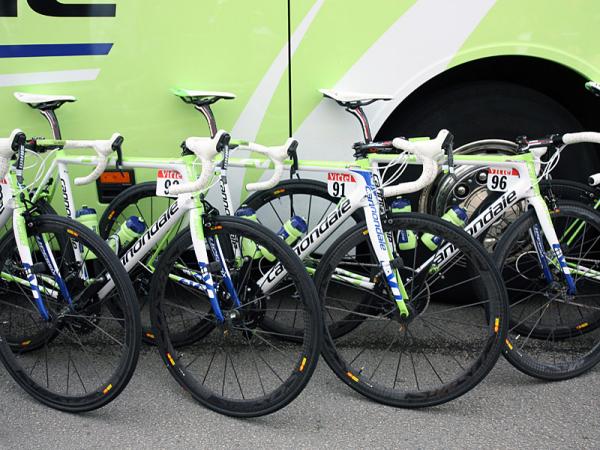
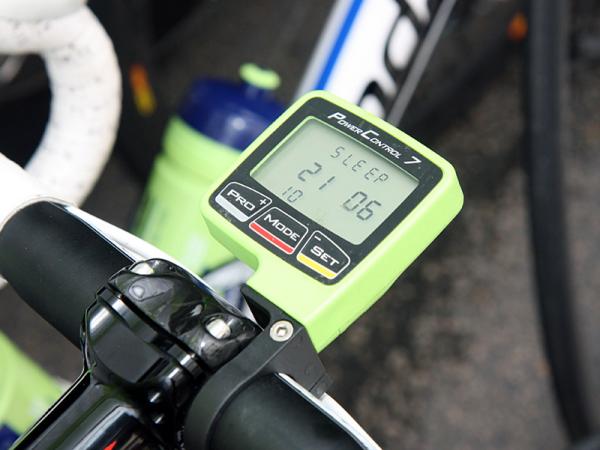
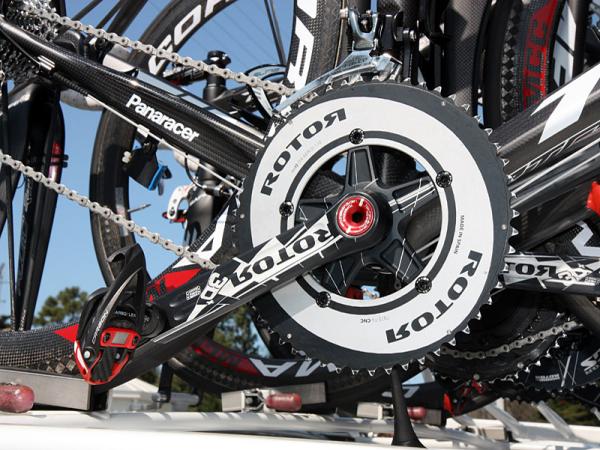
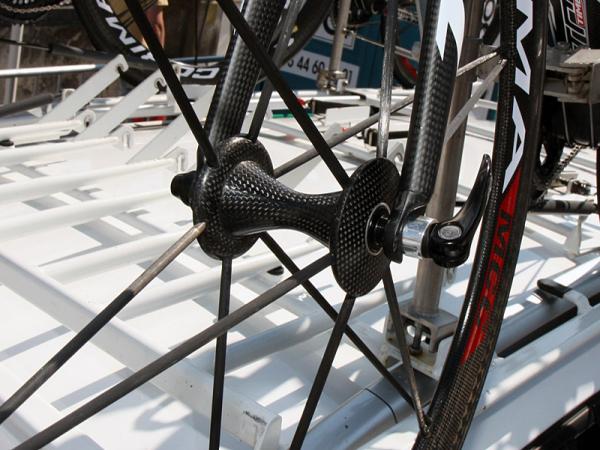
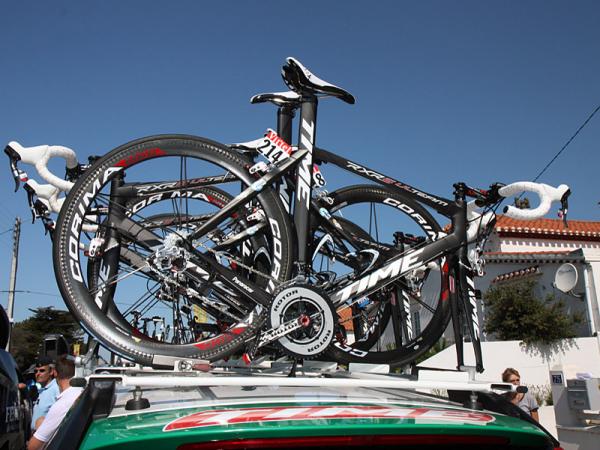
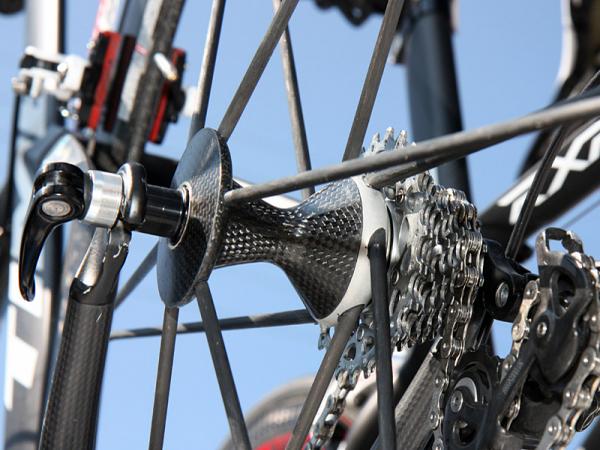
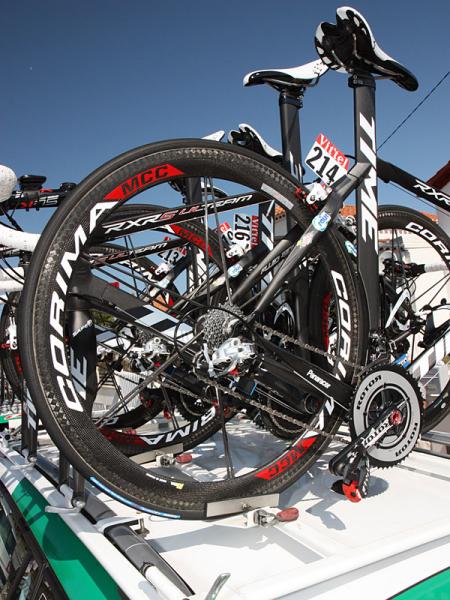
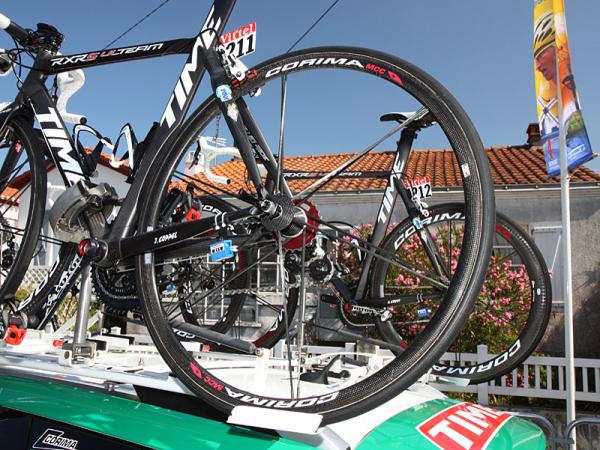
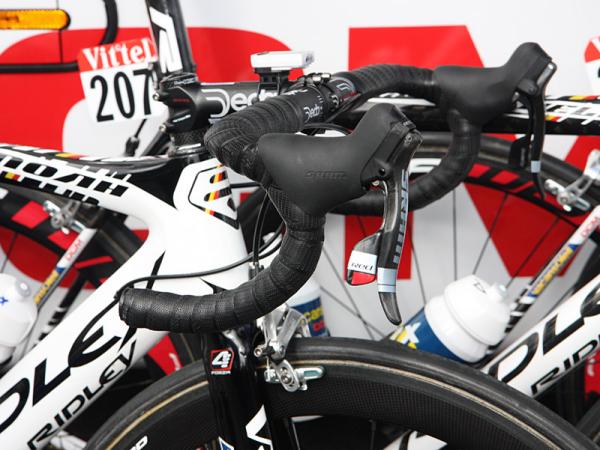
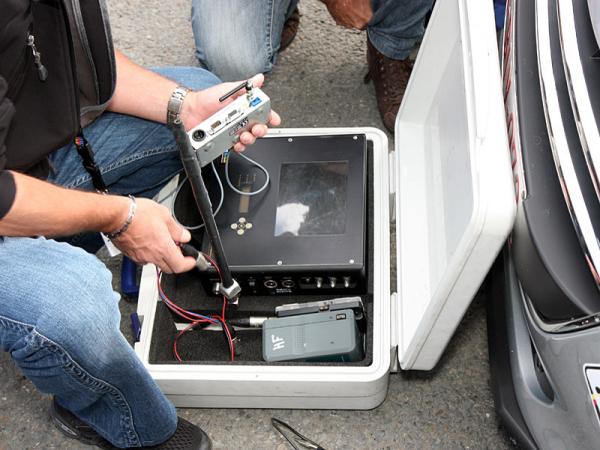
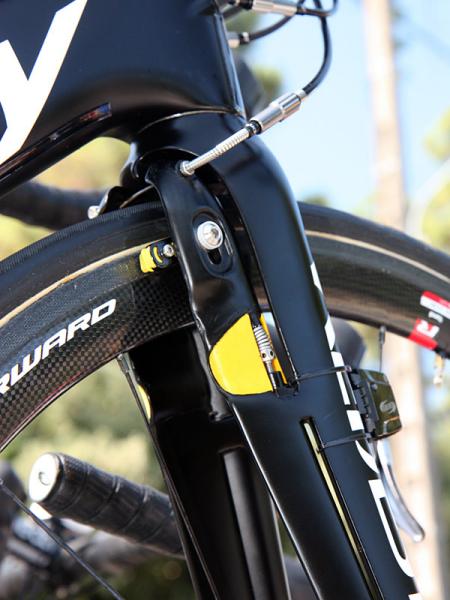
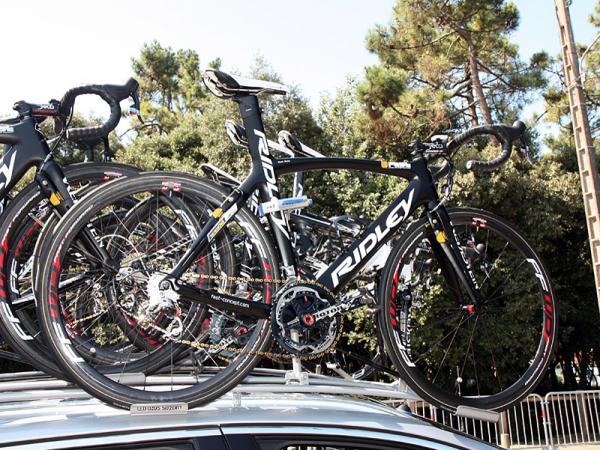
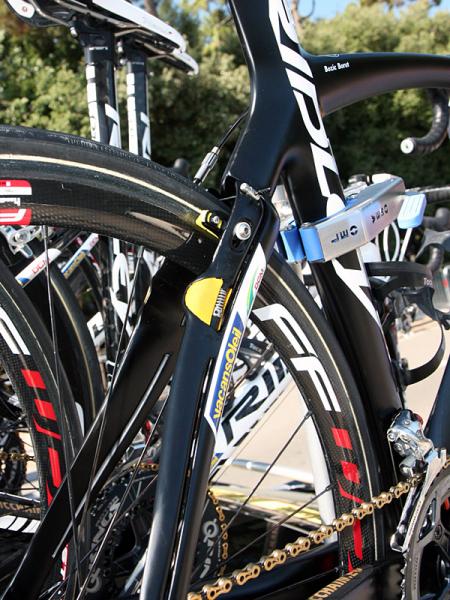
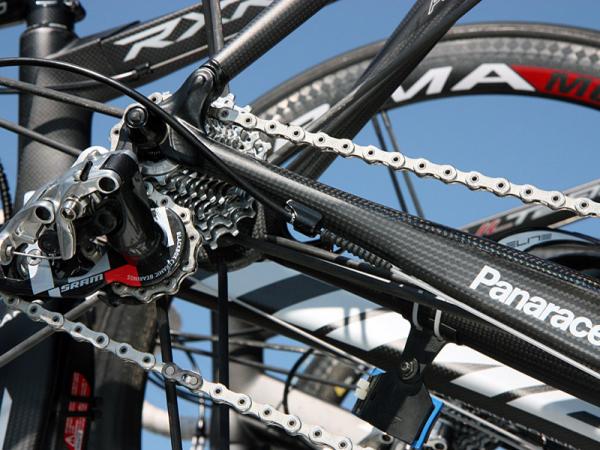
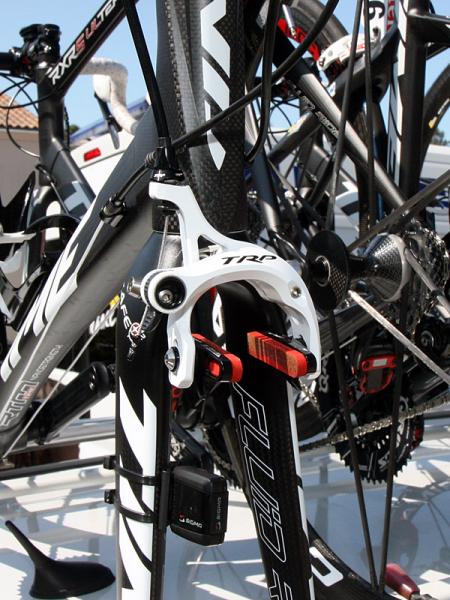
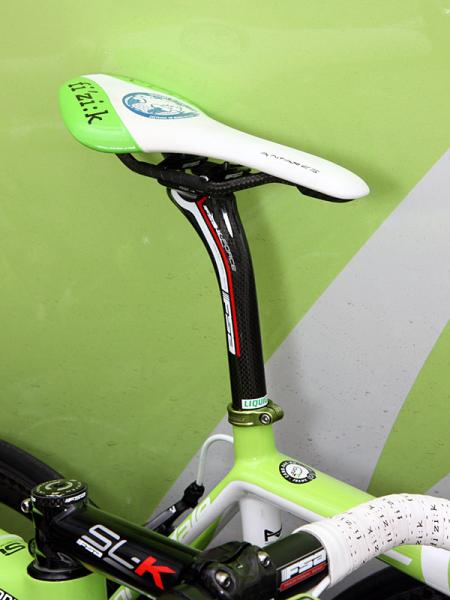
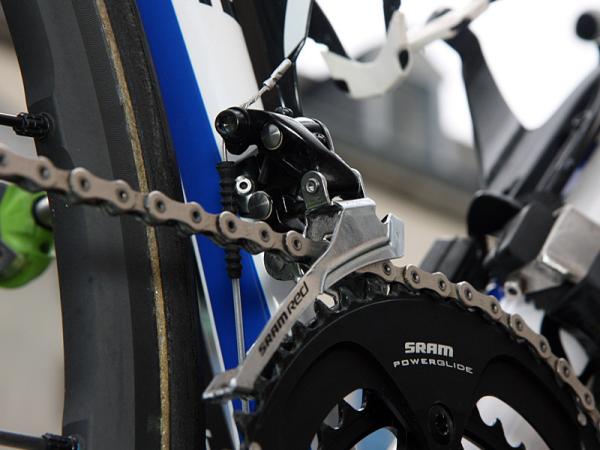
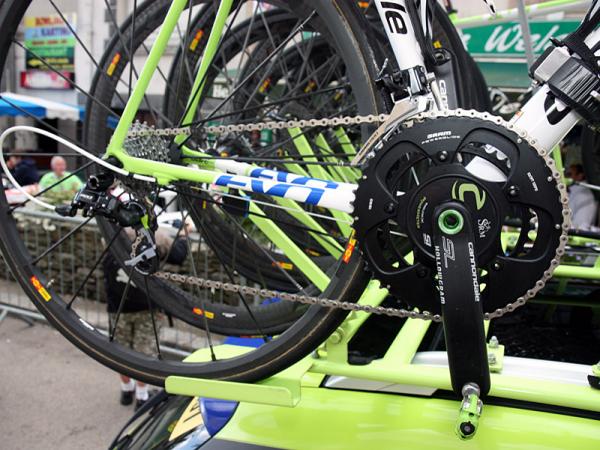
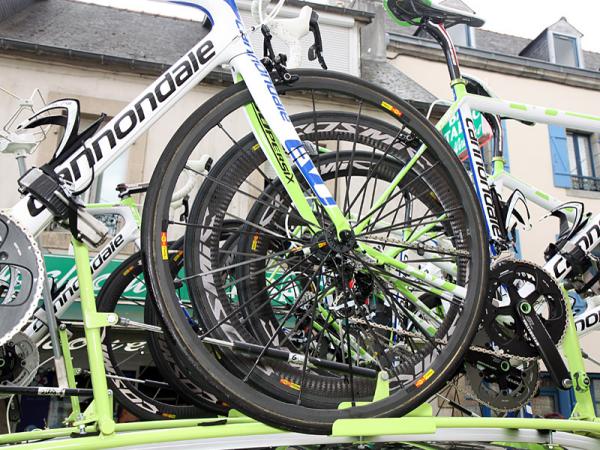
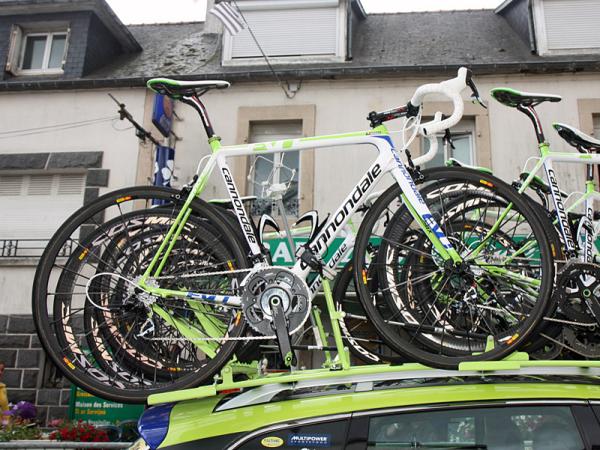
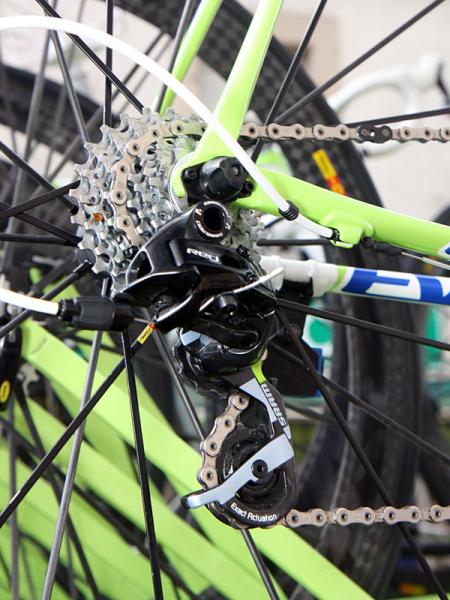
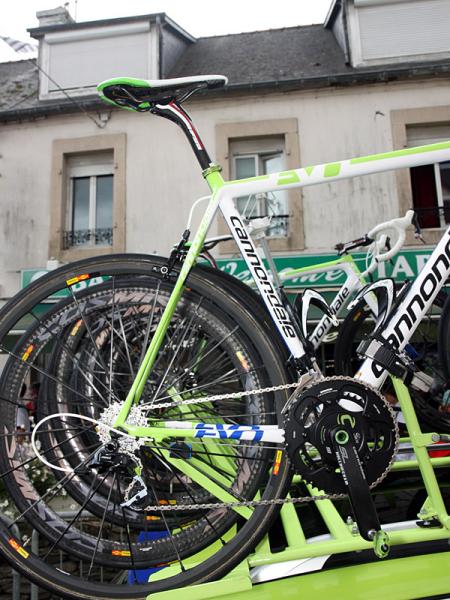
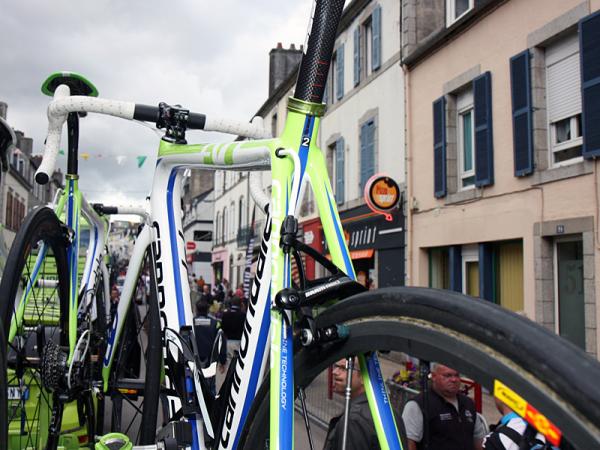
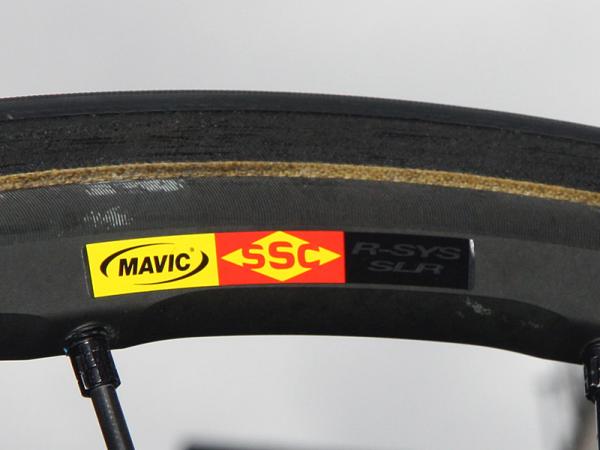
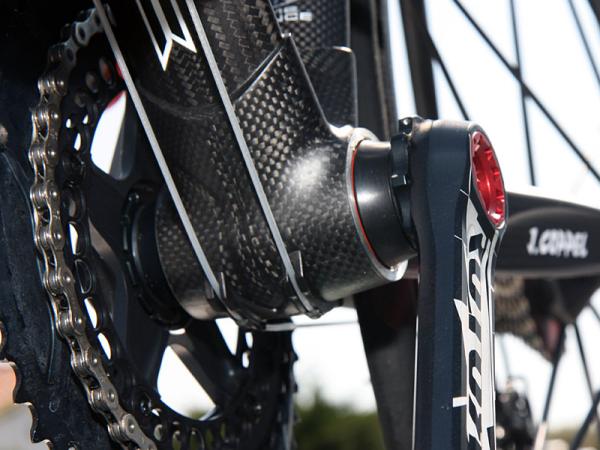
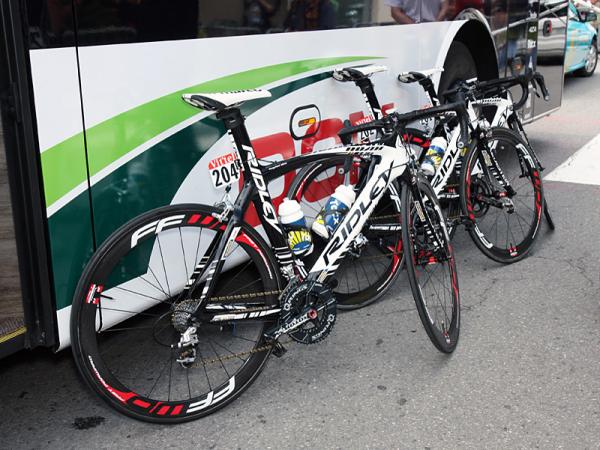
New SuperSix Evo models for Ivan Basso and Liquigas-Cannondale
Tour de France tech: Adjustable seatposts and funky graphics
Tour de France tech: New aero kit at team time trial
Tour de France tech: Custom aero bottles for Rabobank
Tour de France tech: Hushovd's yellow Cervélo S5
Tour de France tech: Oakley lens coatings for the rain
Tour de France tech: Looking through the magnifying glass
Tour de France tech: Thomas Voeckler's Colnago C59
Tour de France tech: Europcar, Euskaltel-Euskadi and BMC bikes
Liquigas-Cannondale is on the Bedford, Connecticut company's latest SuperSix Evo – an ultralight evolution of the previous SuperSix Hi-Mod that reportedly weighs just 695g for the bare frame. Team frames are almost assuredly a fair bit heavier than that, though, given the thick coats of paint comprising the white, light green, and blue livery – paint can easily add a couple hundred grams.
Even so, team mechanics likely have to add some ballast somewhere to meet the UCI's minimum weight of 6.8kg. BikeRadar's recent First Ride test bike came in at just 6.11kg (13.46lb) without pedals and that was with aluminum clinchers fitted instead of the team's more usual ultralight Mavic Cosmic Carbone Ultimate carbon tubulars.
Other aspects of Liquigas-Cannondale's team builds are similarly light, including a complete SRAM Red group – finished in matching accent colors just for the team – Cannondale's own Hollowgram SL BB30 crank with SRM power measuring spiders, fi'zi:k saddles with braided carbon rails, Speedplay Zero Stainless pedals, Elite bottle cages, Gore Ride-On derailleur cables and housing, and FSA bars, stems, and seatposts.
As for that crazy height-adjustable seatpost we showed you on Ivan Basso's machine just prior to the start of this year's Tour de France? Perhaps he's saving it for a special occasion but unless we've missed it, Basso hasn't actually used it during any stage of the race.
Striking Time RXRS Ulteam machines for Saur-Sojasun

Saur-Sojasun is using Time's striking RXRS Ulteam frame for road stages in this year's Tour de France
Get The Leadout Newsletter
The latest race content, interviews, features, reviews and expert buying guides, direct to your inbox!
French cycling team Saur-Sojasun is "keeping it in the family" so to speak with its Time RXRS Ulteam road machines in this year's Tour de France. Time has made some concessions to aerodynamic performance with the frame's deeper-section down tube and seat tube but for the most part, the focus still remains on stiffness, weight, and ride quality.
Key features on Saur-Sojasun's team bikes are the Translink integrated seatmast, the asymmetrical chain stays, tapered front end, nanotube-infused carbon fiber materials that are still woven in-house using Time's RTM process, and so-called Vibraser composite construction to maintain the company's characteristically smooth ride quality.
Saur-Sojasun equips its Time RXRS Ulteam frames with an eclectic mix of components, including a SRAM Red transmission, Rotor 3D+ cranksets (mostly with round chainrings), Corima carbon tubular wheels with carbon hubs and spokes wrapped with Panaracer rubber, FSA bars and stems, TRP R970SL magnesium brake calipers with cam-style quick-release, Gore Ride-On sealed derailleur cables and housing, and – of course – Time iClic pedals.
Aero Ridley Noahs for Vacansoleil-DCM
Dutch cycling team Vacansoleil-DCM – including new hero Johnny Hoogerland – has mostly been using Ridley's aerodynamic Noah to contest road stages in this year's Tour de France. A decidedly unusual machine with its sweeping lines and very deep tube profiles, the Noah's defining features are its uniquely split fork blades and seat stays that are said to help direct air out and away from the wheels' churning spokes to decrease drag.
In addition, roughened surfaces on the outermost edges of key tubes supposedly helps passing air 'stick' to the trailing edges of the frame for cleaner airflow. All told, Ridley claims a 20-watt savings at 40km/h (25mph) as compared to its own round-tubed Helium.
Build kits include SRAM's top-end Red group, Rotor 3D+ cranks and chainrings, FFWD wheels, Look KéO pedals, Deda bars and stems, Selle San Marco saddles, Vredestein tires, Tacx bottles and cages, KMC chains, and grippy Lizard Skins bar tape.
Two Vacansoleil-DCM also have a new Ridley aero bike at their disposal: the even more striking Noah FB, which shares similar split-tube shaping as the standard Noah but with cleverly incorporated linear-pull brakes that are molded directly into the carbon fiber structure. In addition to cleaning up the aerodynamic profile of the bike, the integrated brake calipers drop a substantial amount of weight, they should require less maintenance than conventional calipers, and they still include standard adjustments like pad height and angle and spring tension.
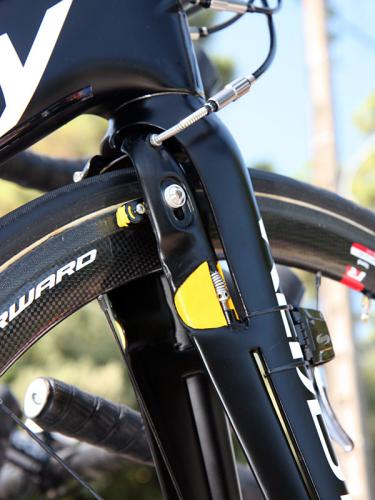
Vacansoleil-DCM's Ridley Noah FB bikes use integrated front and rear brakes that are molded directly into the carbon structure
The R-Surface texturing on Vacansoleil-DCM's standard Noahs also give way to a more pronounced rubber ridge on the Noah FB.
That all being said, though, those new Noah FBs have mostly made it to the finish lines each day atop the team cars as spare bikes. Given the newness of the model, we're guessing team riders are gathering up more test time before committing them to competition.
This article first appeared on BikeRadar